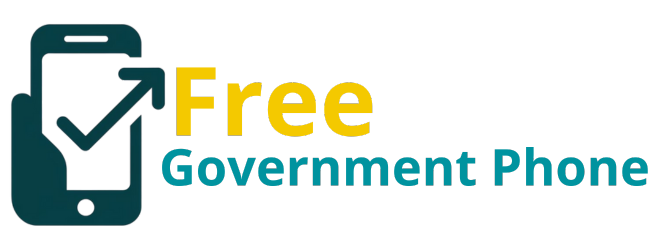If you’re living on a tight budget in California, the LifeLine Program can cut your phone or internet bill every month. You qualify either by participating in certain public assistance programs or by earning below a set income limit based on your household size. The application is simple, proof of eligibility and a few forms. Done right, it saves you money on essential services. [1]
Key Takeaways
- You may qualify if you’re enrolled in public assistance or have a low income.
- Only one discount is allowed per household, so check before applying.
- Most errors come from missing or expired documents, submit complete proof.
What Is the California LifeLine Program
Overview of the program and who it serves
There’s no reason someone should have to choose between food and a phone bill. California LifeLine was built to make sure they don’t. It’s a state-run program offering discounted phone services to low-income households. The idea is simple: keep people connected. Not just for emergencies, but for jobs, medical care, and daily life.
Most recipients live on tight monthly incomes, often below the federal poverty line. Many are seniors, veterans, immigrants, or working families with kids. Others are unhoused or in transitional housing. LifeLine isn’t charity. It’s infrastructure.
Services covered (cell phone, home phone, internet)
LifeLine isn’t locked to just landlines or mobile phones. It can be applied to:
- Basic wireless service (with or without a smartphone)
- Home phone service
- Broadband internet (through bundled plans with some providers)
A lot of folks use it for prepaid mobile service, which often includes unlimited texts, calls, and some data. Others might use it to maintain a landline, still common among older residents in rural parts of the state.
Administered by the California Public Utilities Commission (CPUC)
The California Public Utilities Commission (CPUC) handles all the regulation, enforcement, and eligibility verification. If you’re applying, appealing, or renewing, your paperwork runs through them.
Eligibility Requirements
Program-Based Eligibility
The fastest way to qualify is through another public assistance program. If you’re already receiving aid from the government, chances are, you meet the bar.
You qualify if someone in your household is enrolled in:
- Medicaid / Medi-Cal
- CalFresh / SNAP (food stamps)
- Supplemental Security Income (SSI)
- Section 8 / Federal Public Housing Assistance
- WIC (Women, Infants and Children)
- Temporary Assistance for Needy Families (TANF)
- CalWORKs [2], StanWORKs, GAIN
- Tribal TANF
- Bureau of Indian Affairs General Assistance
- National School Lunch Program (free meals)
- Head Start (Tribal only)
- Food Distribution Program on Indian Reservations
- Veterans and Survivors Pension
You’ll need to submit a current letter or card proving active enrollment. Expired documents won’t work.
Income-Based Eligibility
If you’re not in a qualifying program, there’s still a path: income-based eligibility. You qualify if your household income falls under this ceiling (June 2025 – May 2026):
- 1 person: $24,200
- 2 people: $32,600
- 3 people: $41,100
- 4 people: $49,600
- Add $8,500 per extra person
“Household” includes everyone who lives at your address and shares income or expenses.
Income includes:
- Wages or salary
- Unemployment
- Social Security
- Child support
- Rental income
You’ll need to provide proof, usually three months of pay stubs, tax returns, or benefit statements.
Special Circumstances
Some households don’t fit the standard mold. The program leaves room for that.
- Tribal households can qualify through specialized tribal programs or through the BIA.
- Survivors of domestic violence or human trafficking can apply with alternate documentation and may request a confidential address.
- Shared households (like multiple adults with separate incomes) must file a one-per-household worksheet to explain how eligibility applies to just one person.
Required Documentation

Acceptable proof types
Bring paperwork or don’t bother applying. The CPUC needs:
- Benefit award letters from public programs
- Recent pay stubs or wage statements
- Federal, state, or tribal tax returns
- Letters from Social Security or veterans agencies
Avoid screenshots. Send official copies, and make sure they’re readable.
Common application mistakes to avoid
Top reasons people get rejected:
- Missing documents
- Blurry or unreadable scans
- Expired proof of benefits
- Filing as a dependent on someone else’s taxes
- Submitting under someone else’s name
Check every page before mailing or uploading.
TTY and users with disabilities (Deaf and Disabled Telecommunications Program)
The Deaf and Disabled Telecommunications Program (DDTP) runs parallel to LifeLine. If you’re hard of hearing or have mobility issues, you might qualify for adaptive devices. That’s separate from LifeLine but can work alongside it.
How to Apply
Application Channels
You can apply three ways:
- Online through a provider’s website or CPUC portal
- By mail (the pink envelope method)
- Through a provider directly, often in-person or over the phone
The provider will usually walk you through the process.
Step-by-Step Process
- Pick a participating service provider.
- Fill out their interest form or initial application.
- Wait for a confirmation packet or digital approval link.
- Submit required documents (ID, income, benefits).
- Wait for CPUC to verify and approve your eligibility.
Expect text alerts or emails with status updates. If denied, you’ll get a notice explaining why.
Application Timelines and Wait Periods
Most applications are processed in 3 to 10 business days. If you’re mailing paperwork, give it 2 to 3 weeks. Once submitted, there’s a freeze, you can’t reapply elsewhere until the current one’s resolved.
Available Discounts and Covered Services
Monthly discount amount
The current LifeLine monthly discount is around $17.90 for wireless and $16.23 for home phone service. If you’re on tribal land, it can be higher.
Some providers offer free phones with basic plans at zero cost. Others knock the discount off a paid plan.
Eligible services
Covered services include:
- Basic mobile phone plans
- Landline service (yes, people still use it)
- Internet bundles, in some cases
Most recipients go for wireless since it’s flexible and portable.
Charges not covered
LifeLine does not cover:
- Installation fees
- Late fees
- Upgrades or fancy phones
- Data add-ons
- International calling
If it’s extra, you pay for it.
Discount per household rule
Only one LifeLine discount per physical address. Doesn’t matter how many adults live there or how many phones you want. This rule’s strictly enforced.
Annual Renewal and Continued Eligibility
When and how to renew
You must renew every year. The CPUC mails you a renewal packet, or you get an alert to go online and update info. There’s a deadline, usually within 30 days.
Required documentation for renewal
You’ll need to prove you’re still eligible. This might mean resubmitting:
- Benefit letters
- Pay stubs
- Updated tax returns
Same rules as the first time, clear, current, official.
What happens if you miss the deadline
You lose your discount. Your provider might start charging full price or cut off service. You’ll have to reapply from scratch.
How to update household info or income
Moved? Got a raise? Lost your job? Update your application through your provider or CPUC’s online portal. Waiting too long can lead to disqualification.
Denials, Appeals, and Cancellations
Common reasons for denial
Most denials come down to:
- Incomplete forms
- Missing documentation
- Already claimed as a dependent
- Household already has LifeLine
Read every question. Triple-check paperwork.
How to appeal through the CPUC
Denied? You can file a written appeal to the CPUC Consumer Affairs Branch. Explain the issue and include updated proof.
They’ll respond in writing, usually within 30 days.
Submitting a separation request
If someone else in your house is already enrolled, but you pay your own bills and don’t share income, you can file a One Per Household Exception form.
You’ll need to explain the living arrangement in writing.
Handling service cancellations and lapses
If your service is canceled or suspended, call your provider immediately. Sometimes it’s a paperwork error. If not, you may need to reapply.
What to do if your service or phone stops working
Lost phone? Broken SIM? Contact your LifeLine provider first. Most offer a replacement once per year. If they won’t help, report it to the CPUC.
Choosing a Service Provider
Major LifeLine providers in California
Big names offering LifeLine service include:
- Assurance Wireless
- Safelink Wireless
- TruConnect
- Life Wireless
- Cintex Wireless
They all meet CPUC standards, but their offerings differ.
Comparing coverage, devices, plan features
Look at:
- Coverage in your ZIP code
- Type of phone provided (flip phone vs smartphone)
- Monthly data and call/text limits
- Customer service quality
Some give free Androids. Others give you SIMs for unlocked phones.
How to switch providers (inter-carrier transfer)
Unhappy with your current provider? You can switch. But you must:
- Complete a transfer request
- Wait out a processing window
- Not have another pending application
The discount follows you, not the phone.
Life Changes and Your LifeLine Account
Moving to a new address
Update your address ASAP. Your eligibility is tied to your home address, so delays can trigger disqualification.
Changing household size or income
New roommate? Divorce? Lost a job? Report it. Your income threshold might shift.
Combining LifeLine with other federal programs (e.g., ACP)
You can use LifeLine alongside the federal Affordable Connectivity Program (ACP). That means double discounts. But they must be applied to different services (e.g., one for internet, one for phone).
Avoiding Scams and Protecting Your Information
How to identify real providers
Real LifeLine providers are registered with the CPUC. They won’t ask for upfront payments or pressure you to “act now.”
Check CPUC’s website to verify providers.
What not to share with third parties
Never give out:
- Social Security numbers
- Benefit card PINs
- Personal documents
Unless you’re talking directly to a LifeLine provider or CPUC, don’t share anything.
Reporting suspected fraud to the CPUC
Think you’ve been scammed? File a complaint with the CPUC Consumer Affairs Branch. They take fraud seriously and investigate aggressively.
Frequently Asked Questions
Can undocumented immigrants apply?
Only if they meet eligibility and can provide valid documentation. Some providers accept ITIN numbers instead of SSNs.
What if I live with others who also receive benefits?
Only one person per household can get LifeLine. You’ll need to explain why you qualify separately if someone else is already enrolled.
How can I check my application status?
Check through your provider’s portal or call CPUC’s LifeLine call center. They’ll give you updates.
Can I receive LifeLine for internet-only service?
Yes, if your provider offers internet as a covered option. Not all do.
Does LifeLine cover mobile data plans?
Basic data is included in most mobile LifeLine plans. But extra data costs more and isn’t covered.
Frequently Asked Questions
What if my roommate already has a LifeLine discount, but we have separate expenses?
You can still apply, even if someone else in your home already gets the LifeLine discount. You’ll need to show that your household is financially separate. That means proving you each pay your own bills and don’t share money. The program looks at households, not just addresses, so roommates with separate incomes can qualify individually.
Can I switch LifeLine providers without losing my discount?
Yes, you can switch to another approved LifeLine provider, but the process can take a few days. You won’t lose your discount if you follow the rules. You’ll need to cancel your current service first or ask the new provider to handle the switch for you. Keep in mind you can only switch once every 30 days.
What happens if I move to a different city in California?
You have to tell your LifeLine provider if you change your address. The discount doesn’t follow you automatically. If your new address changes your income situation or household size, that might affect your eligibility. Not updating your info can lead to losing your discount, or worse, getting flagged for fraud.
Can I still apply if I don’t have a Social Security number?
Yes, you can apply without a Social Security number, but you’ll need to use another form of identification. Many providers accept documents like an Individual Taxpayer Identification Number (ITIN) or other official papers that prove who you are. The key is to work with a provider that knows how to handle this kind of application.
How do I know if a LifeLine provider is real?
Fake providers often ask for personal information like your full Social Security number or payment up front. Real providers are listed on the California Public Utilities Commission website. You can also call the CPUC to verify a company. If someone’s pressuring you to sign up fast or give up private details, that’s a red flag.
Final Thoughts
If you’re stretching every dollar to make rent, buy food, or keep the lights on, cutting $15 to $20 off your phone bill isn’t nothing. It’s groceries for a couple days. A bus ticket. Gas in the tank.
This program won’t fix your financial situation. But it’ll keep your line open, which can open other doors.
Need help getting started? Free Government Phone offers a free online program for seniors on Medicaid, including courses, consultations, and boot camps, to guide you through applying and using your phone.
Apply once you know you qualify, and keep your paperwork in one place. The system works, but only if you do your part.
References
- https://www.cpuc.ca.gov/consumer-support/financial-assistance-savings-and-discounts/lifeline/california-lifeline-eligibility
- https://www.csa-stanislaus.com/cash-aid/

